A Trip to the Rhodopian Mountain - photostory
Elli Stoyanova, 21.08.2009
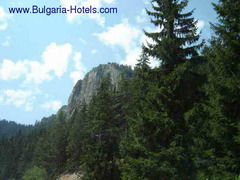 Tired of the crowded seaside resorts and feeling too lazy for serious mountain hiking our adventurous party of four friends decides to try something totally different this time – a three-day trip around the villages in the Rhodopian Mountain. The mountain has lately become extremely popular with its cultural and natural landmarks – marvelous caves, gorges, ancient fortresses and temples. It is situated in southern Bulgaria and only a small part of it is on Greek territory. It is relatively low (its highest peak is Golyam Perelik – 2191m) especially when compared to the Rila and the Pirin mountains to the west but much warmer and spreading over a much greater territory – 14 700km2 .
Tired of the crowded seaside resorts and feeling too lazy for serious mountain hiking our adventurous party of four friends decides to try something totally different this time – a three-day trip around the villages in the Rhodopian Mountain. The mountain has lately become extremely popular with its cultural and natural landmarks – marvelous caves, gorges, ancient fortresses and temples. It is situated in southern Bulgaria and only a small part of it is on Greek territory. It is relatively low (its highest peak is Golyam Perelik – 2191m) especially when compared to the Rila and the Pirin mountains to the west but much warmer and spreading over a much greater territory – 14 700km2 .
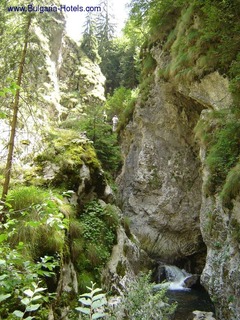 Burning with curiosity and equipped with a few maps and torches we jump in the car and start off for our first destination – the village of Trigrad in the Western part of the Rhodopes. The Western Rhodopes with central town Smolyan are higher, more often visited by tourists and less densely populated. Their hilly landscape is an amazing combination of high cliffs and forests, plants are growing on every single piece of soil, some of them even on the narrow terraces formed in the rocks surrounding the road.
Burning with curiosity and equipped with a few maps and torches we jump in the car and start off for our first destination – the village of Trigrad in the Western part of the Rhodopes. The Western Rhodopes with central town Smolyan are higher, more often visited by tourists and less densely populated. Their hilly landscape is an amazing combination of high cliffs and forests, plants are growing on every single piece of soil, some of them even on the narrow terraces formed in the rocks surrounding the road.
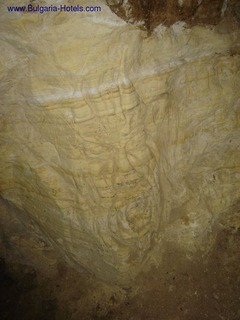 The roads connecting the towns and the multitude of villages in the Rhodopes are winding between the hills, sometimes forming turns of almost 180 degrees but they are mostly well-maintained. We don’t encounter any trouble traveling by car. Since the population of the Rhodopes is mainly Muslim, there is a mosque in every village.
The roads connecting the towns and the multitude of villages in the Rhodopes are winding between the hills, sometimes forming turns of almost 180 degrees but they are mostly well-maintained. We don’t encounter any trouble traveling by car. Since the population of the Rhodopes is mainly Muslim, there is a mosque in every village.
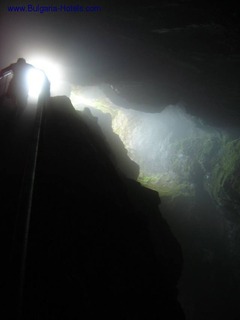 The village of Trigrad is situated some 12 km from the famous ski resort of Pamporovo. Its increasing popularity id due to the Devil’s Throat cave situated near the village and the stunning cliffs of the Trigrad gorge, raising up on the two sides of the Trigrad river for 3-4 km. The village itself is small and picturesque. You can see the traditional rural houses and many terraced slopes where vegetables are grown. Besides, there is no place in the world with such beautiful cows!! Look at the cow on the picture – isn’t it charming? When you get near the village many of the locals will offer you some Mursalski tea (the region is famous for this herb which is said to possess various healing properties and to enhance sexual power as well).
The village of Trigrad is situated some 12 km from the famous ski resort of Pamporovo. Its increasing popularity id due to the Devil’s Throat cave situated near the village and the stunning cliffs of the Trigrad gorge, raising up on the two sides of the Trigrad river for 3-4 km. The village itself is small and picturesque. You can see the traditional rural houses and many terraced slopes where vegetables are grown. Besides, there is no place in the world with such beautiful cows!! Look at the cow on the picture – isn’t it charming? When you get near the village many of the locals will offer you some Mursalski tea (the region is famous for this herb which is said to possess various healing properties and to enhance sexual power as well).
Annually, in the beginning of August, there are folk festivals in Trigrad – folk bands and singers from Bulgaria and from other countries perform at the entrance of the Devil’s Throat cave.
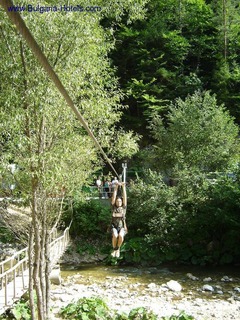 The entrance fee for the cave is two leva and the guard will let you in only after a group of at least 5 or 6 people has gathered. You need warm clothes and waterproof shoes for the cave as it is really cold (8°C) and damp in there. The cave is lit by many lamps so you don’t need to take a torch with you unless you want to explore in detail all the niches in the rocks. After a long artificially dug corridor you will find yourself in an enormous gallery. It was formed as a result of the collapse of earth layers in the past. If you look at the stone walls more carefully you will find a carved devil’s face and some other figures which I will leave for you to discover.
The entrance fee for the cave is two leva and the guard will let you in only after a group of at least 5 or 6 people has gathered. You need warm clothes and waterproof shoes for the cave as it is really cold (8°C) and damp in there. The cave is lit by many lamps so you don’t need to take a torch with you unless you want to explore in detail all the niches in the rocks. After a long artificially dug corridor you will find yourself in an enormous gallery. It was formed as a result of the collapse of earth layers in the past. If you look at the stone walls more carefully you will find a carved devil’s face and some other figures which I will leave for you to discover.
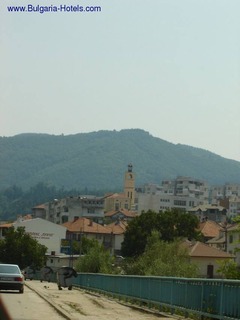 From a staircase built for tourists you can see the river at the bottom of the gallery, disappearing with roar in the dark abysses below. In this cave you can also see one of the highest underground waterfalls in Europe – 42m. Just before the natural entrance of the Devil’s Throat there is a steep staircase at the upper end of which you can see the light streaming in from the outside. The man on the picture looks as if he is going to get on board a spaceship.
From a staircase built for tourists you can see the river at the bottom of the gallery, disappearing with roar in the dark abysses below. In this cave you can also see one of the highest underground waterfalls in Europe – 42m. Just before the natural entrance of the Devil’s Throat there is a steep staircase at the upper end of which you can see the light streaming in from the outside. The man on the picture looks as if he is going to get on board a spaceship.
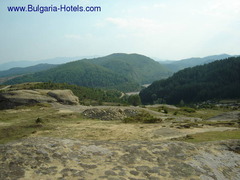 When we finally get out of the cave we are dazzled by the light and by the beauty of the place. Now we can see the river and the rocks in the daylight. The slopes are covered with exuberant vegetation. The place is perfect for lunch.
When we finally get out of the cave we are dazzled by the light and by the beauty of the place. Now we can see the river and the rocks in the daylight. The slopes are covered with exuberant vegetation. The place is perfect for lunch.
We are proceeding to the next cave in the region – the Yagodina cave. This cave is one of the most impressive karst formations in the Rhodopes. It is on five levels and is 10 km long. The uppermost level was inhabited by the people from the Eneolithic Age – their dwellings are situated 10 min from the artificial entrance. The tourist route starts from an artificially dug entrance (the natural entrance is 30 meter above it) and passes only through a small part of the labyrinth of corridors. The working time of the guides is till 4 p.m. and we a re lucky to arrive on time and to join the last group of tourists for the day. In comparison to the Devil’s Throat this cave is much richer in rock formations.
We are passing through amazing galleries with stalactites and stalagmites the guide explains to us everything about the process of their formation I was astonished to learn that it takes 50 to 100 years for a stalactite to increase its length by a single centimeter! There are many other interesting rock formations some of them resembling elephant’s ears, draperies and leopard’s skin. You can even distinguish the figures of Santa Claus, Snow-white and the seven dwarfs! There is a decorated pine-tree in one of the galleries – the New Year’s hall. Every New Year the local spelunking club gathers here to celebrate.
The trip through this cave is much longer and when we get out we head for the nearby small restaurant to discuss the plan for the next day. Just opposite the restaurant there is a rope stretched between the two banks of the river – the Tarzan lift!! You can try it just for 1lv – it’s a great fun, but my advice is to do it before you have eaten at the restaurant One of my friends couldn’t resist the temptation as you can see on the picture.
The next morning, after having slept in the open near the village of Gela, we are on the road again – this time to the town of Zlatograd. The town of Zlatograd is situated in the Eastern Rhodopes, near the town of Momchilgrad and only 3 km of the Bulgarian-Greek border. The central town of the Eastern Rhodopes is Kardjali. The hills in this part of the mountain are lower than those to the west and are covered with low forests. The population makes a living by raising tobacco. That’s why there are so many tobacco plantations along the road and almost everybody in this part of Bulgaria gets addicted to smoking at an early age.
On entering the town we are a bit disappointed at the sight of the blocks of flats typical of the communist period but soon we discover the newly-founded Ethnographic complex. It is an old part of the town in which the houses and the streets are preserved so that you can walk around and immerse yourself in the atmosphere of the past times. Many folk-style taverns are scattered in the complex - there you can relax and have some of the traditional Rhodopian meals. We are amazed to find many workshops in which master-craftsmen are working and they are all ready to pay attention to visitors and to give a detailed explanation about their craft.
We visit the workshop of an old musician who is at the moment one of the few people in Bulgaria making bagpipes. He works as a wood-carver and besides the pipes which he engraves with silver he makes different wooden figures. We are even lucky to hear him playing the pipe. The sound of the pipe is strong and clear, the music - fast and full of emotion. The piper hopes that some boy from the school for bagpipers in Shiroka Luka will become his student one day. After the unusual experience at his workshop we visit a potter’s workshop, a saddler’s workshop and a weaver’s workshop where an old woman teaches me to weave on an old loom.
Unfortunately we don’t have enough time to visit all the interesting places in the Ethnographic complex because our plan for the day includes the village of Tatoul as well.
to be continued... » See the sequel here
 Member of:
Member of:


















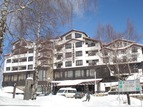

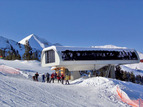

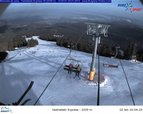
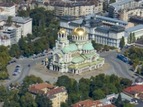
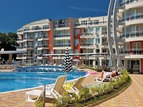


 Touroperator
Touroperator
